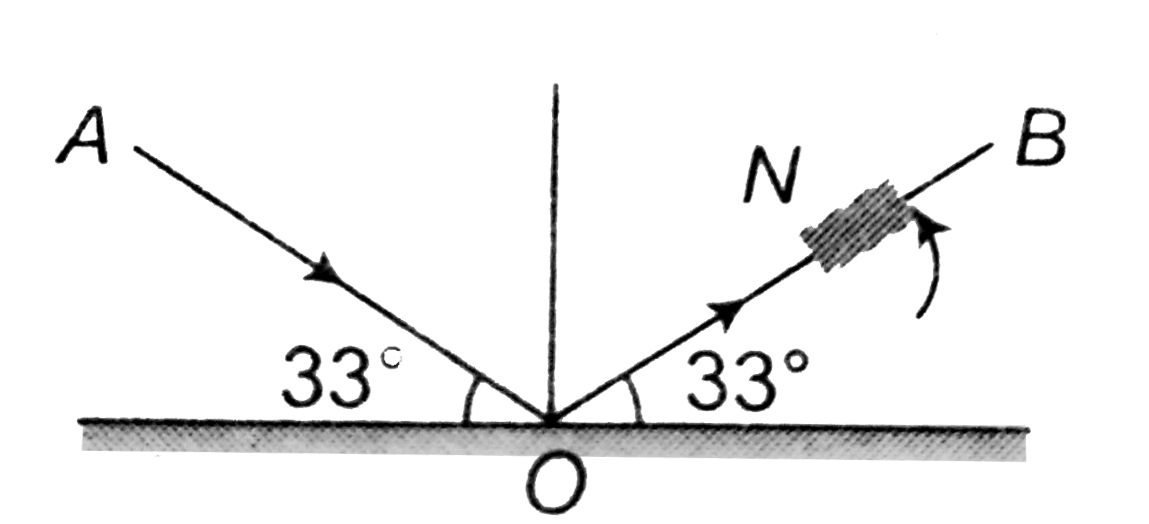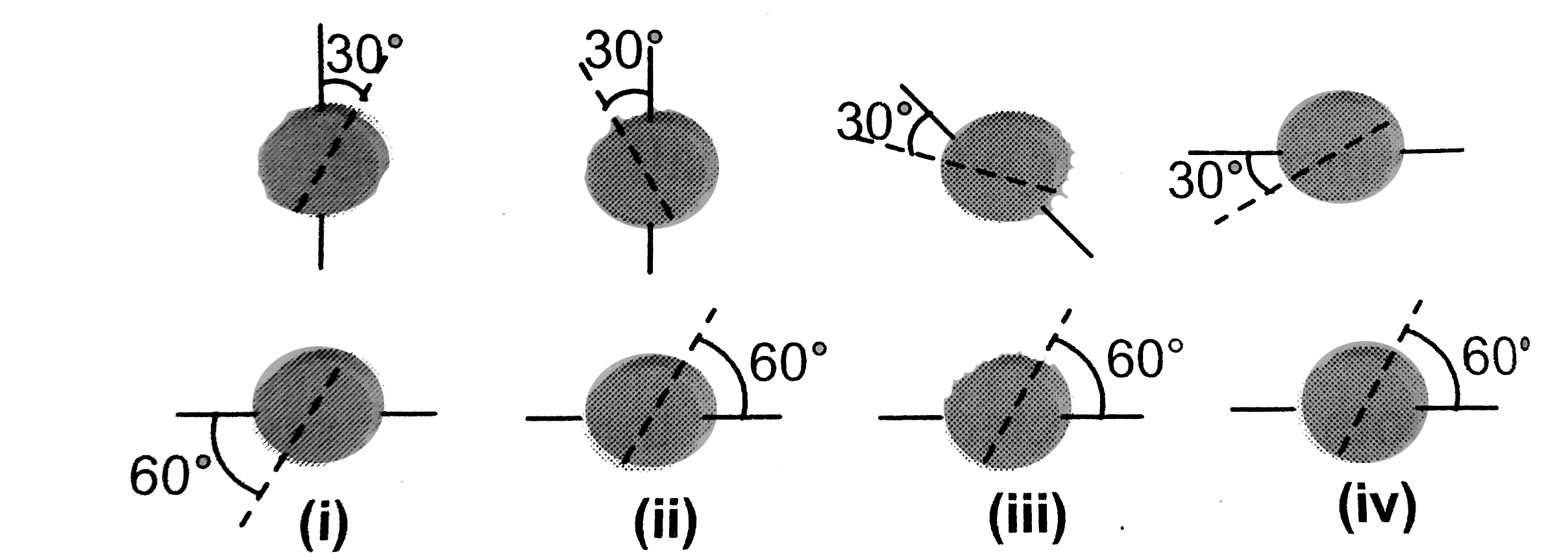Complete Solutions to Polarisation Of Light of chapter WAVE OPTICS of Class 12 book with complete answers and questions
| Class 12 | PHYSICS |
| Chapter | WAVE OPTICS |
| A2Z | Polarisation Of Light |
| Number Of Questions | 37 |
| Academic Year | 2023-24 |
A polariser in used to
04:33View SolutionLight waves can be polarised as they are
02:11View SolutionAn optically active compound
01:04View SolutionOut of the following statements which is not correct?
01:56View SolutionA ray of light is incident on the surface of a glass plate at an angle of incidence equal to Brewster's angle `phi`. If `mu` represents the refractive index of glass with respect to air, then the angle between reflected and refracted rays is
02:59View SolutionIn the propagation of electromagnetic waves the angle between the direction of propagation and plane of polarisation is
03:34View SolutionA calcite crystal is placed over a dot on a piece of paper and rotated, on seeing through the calcite one will be see
01:40View SolutionA ray of light in incident on a glass plate at an angle of `60^@`. What is the refractive index of glass if the reflected and refracted rays are perpendicular to each other?
02:31View SolutionA polaroid is placed at `45^@` to an incoming light of intensity `I_0`. Now the intensity of light passing through polaroid after polarisation would be
01:45View SolutionThe phenomenon of polarisation of electromagnetic wave proves that the electromagnetic waves are
01:25View SolutionIf a wave can be polarised, it must be
02:17View SolutionA ray of light falls on a transparent glass plate. Part of it is reflected and part is refracted. The reflected and refracted rays can be perpendicular to each other for
02:09View SolutionWhen light is incident from air to glass at an angle `57^@`, the reflected beam is completely polarised. If the same beam is incident from water to glass, the angle of incidence at which reflected beam is completely polarised will be
02:03View SolutionA ray of unpolarised light is incident on a glass plate at the polarizing angle of `57^@`. Now,
02:30View SolutionWhich effect provides direct experimental evidence that light is a transverse, rather than a logitudinal wave motion?
02:08View SolutionPolaroid sheets are often used for making sun glasses. This is because polaroid glass.
View SolutionIf a wave can be polarised, it must be
01:44View SolutionPolarising angle for water is `53^@4^'`. If light is incident at this angle on the surface of water and reflected, the angle of refraction is
02:43View SolutionThe angle of polarisation for any medium is `60^@`. What will be critical angle for this?
02:05View SolutionThe angle of incidence at which reflected light is totally polarized for reflection from air to glass (refraction index n) is
02:04View SolutionA polaroid is placed at `45^@` to an incoming light of intensity `I_0`. Now the intensity of light passing through polaroid after polarisation would be
01:19View SolutionA light has amplitude A and angle between analyser and polariser is `60^@`. Light is reflected by analyser has amplitude
01:06View SolutionWhen an unpolarised light of inensity `I_0` is incident on a polarizing sheet, the intensity of the light which does not get transmittted is
01:58View SolutionWhen unpolarised light beam is incident from air onto glass (`n=1.5`) at the polarising angle
02:29View SolutionLight passes successively through two polarimeters tubes each of length `0.29m`. The first tube contains dextro rotatory solution of concentration `60kgm^-3` and specific rotation `0.01 rad m^2kg^-1`. The second tube contains laevo rotatory solution of concentration `30kg//m^3` and specific rotation `0.02 rad m^2kg^-1`. The net rotation produced is
02:30View Solution`V_(0)` and `V_(E)` represent the velocities, m0 and mE the refractive indices of ordinary and extraordinary rays for a doubly refracting crystal. Then
01:44View SolutionTwo Nicols are oriented with their principal planes making an angle of `60^@`. The percentage of incident unpolarised light which passes through the system is
02:04View SolutionUnpolarised light falls on two polarizing sheets placed one on top of the other. What must be the angle between the characteristic directions of the sheets if the intensity of the final transmitted light is one-third the maximum intensity of the first transmitted beam?
02:12View SolutionFigure represents a glass plate placed vertically on a horizontal table with a beam of unpolarised light falling on its surface at the polarising angle of `57^@` with the normal. The electric vector in the reflected light on screen S will vibrate with respect to the plane of incidence in a
 02:03View Solution
02:03View SolutionA beam of light `AO` is incident on a glass slab `(mu=1.54)` in a direction as shown in figure. The reflected ray `OB` is passed throught a Nicol prism. On viewinf through a Nicole prism, we find rotating the prism that `(tan^(-1)1.54=57^(@))`
 01:35View Solution
01:35View SolutionUnpolarised light of intensity `32Wm^-2` passes through three polarizers such that transmission axes of the first and second polarizer makes and angle `30^@` with each other and the transmission axis of the last polarizer is crossed with that of the first. The intensity of final emerging light will be
View SolutionThe figure shows four pairs of polarizing sheets, seen face-on. Each pair is mounted in the path of initially unpolarised light. The polarizing direction of each sheet (indicated by the dashed line) is referenced to either a horizontal x-axis or a vertical y axis. Rank the pair according to the fraction of the initial intensity that they pass, greatest first
 View Solution
View SolutionIn the visible region of the spectrum the rotation of the place of polarization is given by `theta=a+(b)/(lambda^2)`. The optical rotation produced by a particular material is found to be `30^@` per mm at `lambda=5000Å` and `50^@` per mm at `lambda=4000Å`. The value of constant a will be
02:10View SolutionWhen the angle of incidence on a material is `60^(@)`, the reflected light is completely polarised. The velocity of the refracted ray inside the materials is
01:06View SolutionTwo polaroids are placed in the path of unpolarized beam of intensity `I_(0)` such that no light is emitted from the second polarid. If a third polaroid whose polarization axis makes an angle `theta` with the polarization axis of first polaroid, is placed between these two polariods then the intensity of light emerging from the last polaroid will be
05:08View SolutionSpecific rotation of sugar solution is `0.01 SI` units. `200 kg-m^(-3)` of impure sugar solution is taken in a polarimeter tube of length `0.25m` and an optical rotation of `0.4` rad is observed. The percentage of purity of sugar in the sample is
02:42View SolutionA beam of natural light falls on a system of 6 polaroids, which are arranged in succession such that each polaroid is turned through `30^@` with respect to the preceding one. The percentage of incident intensity that passes through the system will be
02:48View Solution
Polarisation Of Light questions and complete solutions for chapter WAVE OPTICS of A2Z PHYSICS (HINGLISH) of Class 12